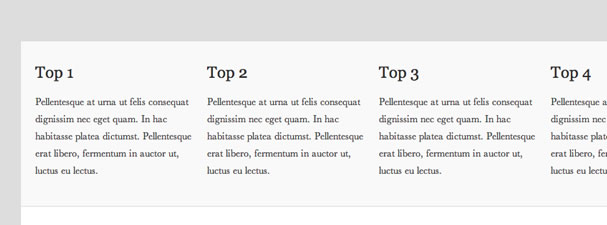Joomla Template Semantics
08 Feb 2010 - Written by Barbara Rudlin
Posted in Bamboo Blog
When a designer creates a Joomla template there are various elements involved. The main elements include the graphics of the site, how the various elements link together, the typography available, alternate colour schemes and, in the case of Joomla based templates, there are also the many modules and their positions to be taken into account.
As a designer I like to have a large variety of module locations available to me, however there are times when the sheer volume of modules makes naming them very tricky.
Naming Conventions.
Wikipedia defines semantics as the study of meaning, usually in language. The word "semantics" itself denotes a range of ideas, from the popular to the highly technical. It is often used in ordinary language to denote a problem of understanding that comes down to word selection or connotation.
If we are to use a semantically based naming convention then module names would be based upon their position resulting in modules such as top left, top right, menu, left column etc. I have come across template designers in the past who used names such as these, but unfortunately they were not in the locations described when the template went live. Very confusing and it looked unprofessional too.
Naming hilites, classes and other template features.
In addition to the naming of the individual modules there is also the option to create different versions of modules within the Joomla template framework. I believe that the different options controlling the CSS formatting, available to a particular module, should be clear from the name of the highlight choices available. This will also make editing any underlying CSS files simpler.
I feel that names such as ‘Hilite1’ should be dropped in favour of the more descriptive terms light, dark, red, grey, purple, bold, shaded etc. All these phrases are far more applicable to the description of the module versions than a generic version number 1, 2 or 3.
When creating a template the designer should be considering the following elements:
- Is there a graphic available for reference? – If so semantic names are not necessary, although they are useful
- Do the names given to the modules have any consistency, user 1-5, advert1-3, that would help define relative positions?
- Are the names based on the function of the module rather than position? Such as search, login, vote etc.
- Double and triple check to ensure the all modules are positioning as expected, a module named left appears on the left and any demo content reflects this.
There are many different reasons and choices when it comes to naming conventions. There is no right or wrong choice however a designer should attempt to be consistent, clear and keep the end user in mind at all times.
blog comments powered by Disqus
